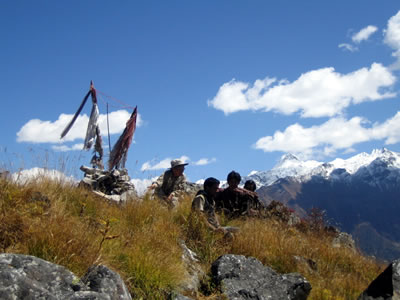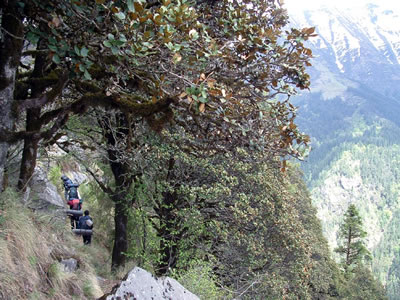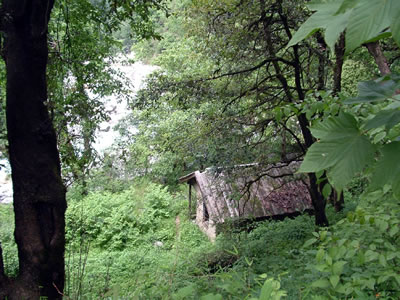Trekking in Tirthan Valley

The Himalayas have been a source of awe and inspiration for millennia to countless individuals. They are the largest, tallest and geologically youngest mountains on our planet. In India, they are the Dehvbumi--the home of the gods. The Himalaya are also one of the most fragile mountain regions of the world and hold an enormous repository of biological diversity which is increasingly under pressure from human activities. The unique ecological aspects of the Western Himalaya led to the creation of the Great Himalayan National Park (GHNP) in the Kullu district of India's mountain state of Himachal Pradesh. These features include biodiversity, sparse human populations, inaccessibility, little tourism, and a local economy based on traditional livelihoods. The rare and endemic nature of many animal and plant communities at GHNP are of interest not only to scientists, but to lovers of nature worldwide. The World Conservation Monitoring Center has identified GHNP as one of the five Centres of Plant Diversity and Endemism in India.
 Day 1: Gushaini (1500m) to Rolla (2100m): Walk through Ecozone of GHNP. Gentle gradient at the beginning of trek. Distance: 10 kms.
Day 1: Gushaini (1500m) to Rolla (2100m): Walk through Ecozone of GHNP. Gentle gradient at the beginning of trek. Distance: 10 kms. Gushani to Shilt Hut
Gushani to Shilt Hut Day 1: Neuli (1500 m) to Shakti (2100 m).
Day 1: Neuli (1500 m) to Shakti (2100 m).